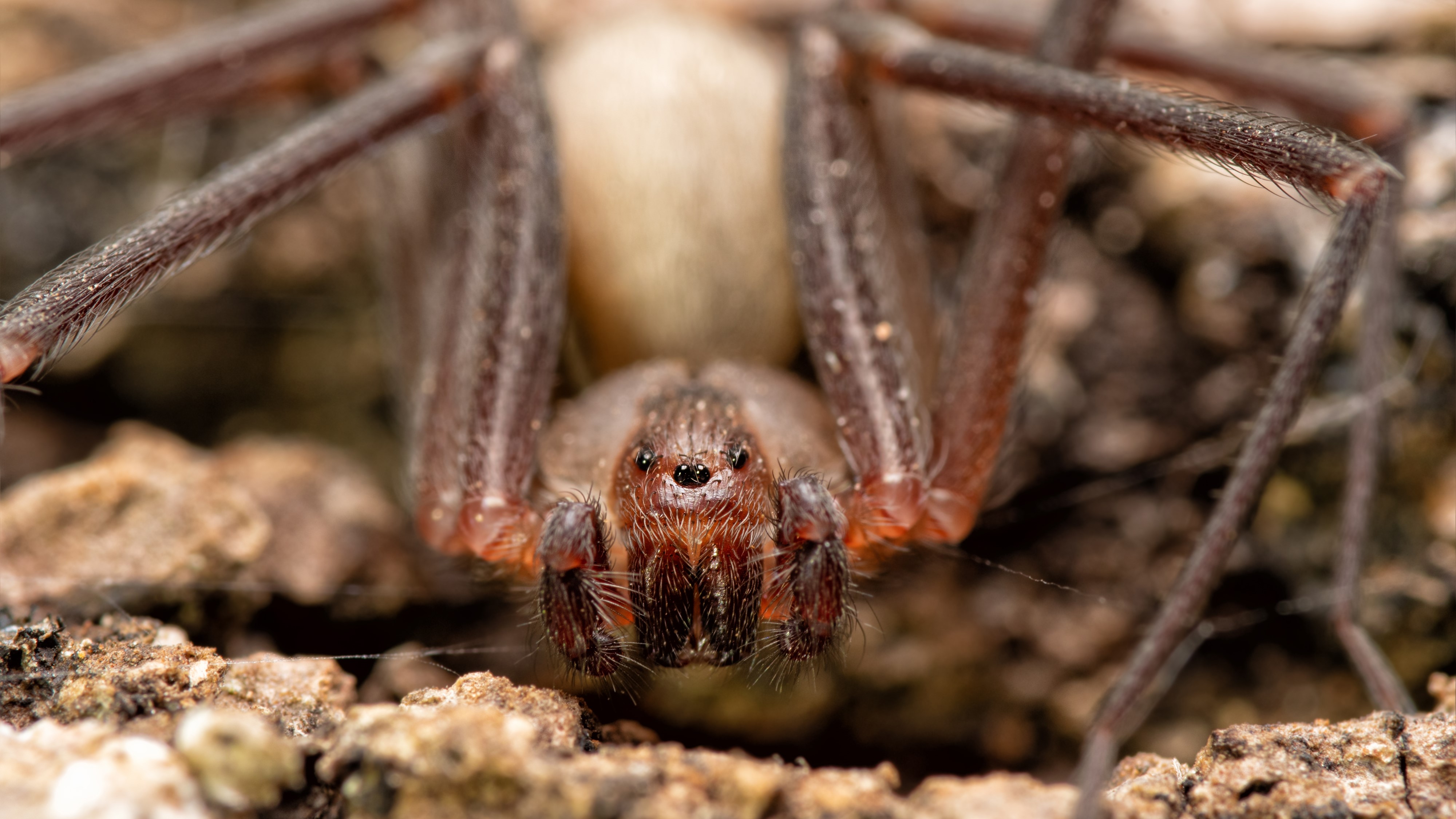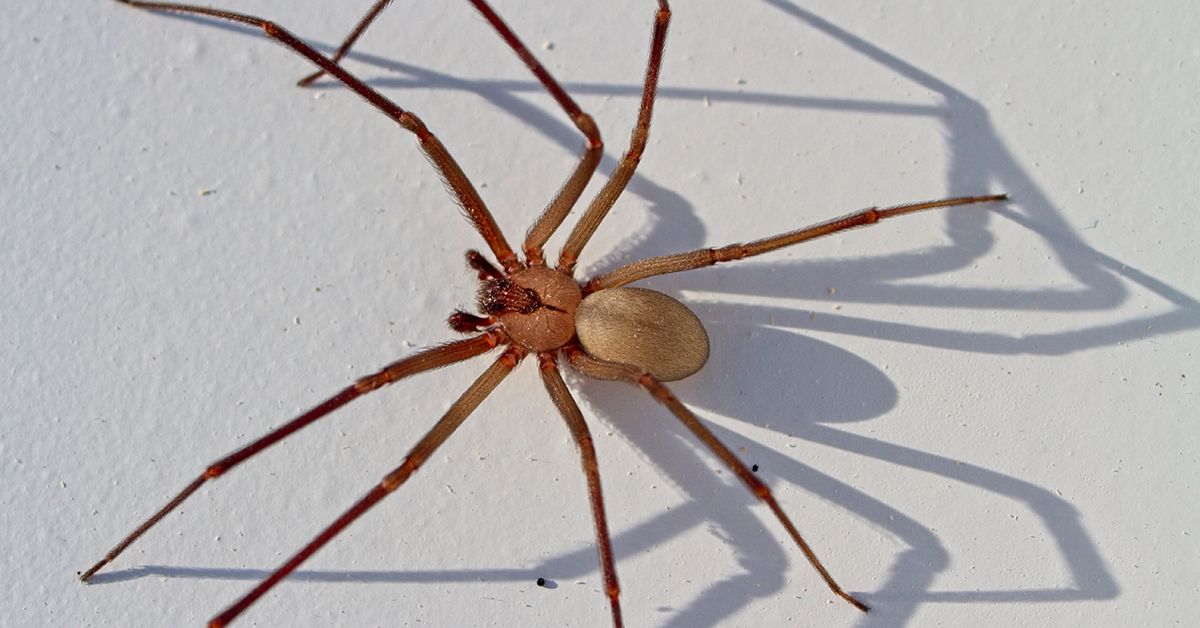When it comes to dangerous spiders, sensational headlines often exaggerate the threat. However, one spider that has gained a reputation—not necessarily through aggression, but due to its venom—is the brown recluse spider (Loxosceles reclusa). Commonly referred to as the “violin spider” due to a distinctive dark marking on its back, the brown recluse remains elusive but misunderstood.
In this article, we will explore the true nature of the brown recluse spider, where it lives, how to identify it, the real risks of its bite, and what to do if you think you’ve encountered one. Let’s separate the myths from the facts.
What Is the Brown Recluse Spider?

The brown recluse is a small, light to dark brown spider with a body size typically ranging from 8 mm to 15 mm (approximately the size of a dime to a penny). It belongs to the Loxosceles genus and is often identified by the violin-shaped marking on its back, just behind the eyes—hence its nickname, the “violinist spider.”
Unlike most spiders that have eight eyes, the brown recluse has only six eyes, arranged in pairs. This subtle difference is one of the key identifying features for entomologists and pest experts. Its legs are long and delicate, and its body has a velvety, smooth texture without noticeable spines or stripes.
Despite its notoriety, the brown recluse is not naturally aggressive. It prefers isolation, hiding in dark, undisturbed places. It bites only when it feels trapped, such as being pressed against human skin accidentally.
Where Do Brown Recluse Spiders Live?

The natural habitat of the brown recluse spider is mostly within the United States, especially in the Midwestern and Southern regions. Some confirmed sightings have also occurred in parts of Mexico and southern Canada, but these are much less common.
Outdoors
In nature, brown recluse spiders tend to hide in:
-
Rock piles
-
Woodpiles or under bark
-
Dry leaf litter
-
Undisturbed sheds or barns
Indoors
Inside homes and buildings, they seek dark, dry, and rarely disturbed areas, including:
-
Basements
-
Attics
-
Behind or under furniture
-
Inside cardboard boxes
-
Inside shoes, closets, or stored clothing
They are nocturnal, meaning they are more active at night. During the day, they tend to stay hidden.
Are Brown Recluse Spiders Dangerous?

The answer is: potentially, but serious complications are rare.
The Nature of Their Bite
Brown recluse spider venom is cytotoxic, meaning it can damage the cells and tissues around the bite. However, bites are uncommon, and most do not lead to severe symptoms.
When a bite does occur, possible reactions may include:
-
Mild irritation or redness
-
A small blister or wound
-
In rare cases, tissue necrosis (cell death) in the immediate area
-
Systemic symptoms like fever, chills, or nausea (rare)
It’s worth noting that not all bites result in necrosis, and the body can often heal without medical intervention. Severe reactions are more likely in young children, older adults, or individuals with underlying health conditions.
According to the Centers for Disease Control and Prevention (CDC), confirmed cases of serious complications from brown recluse bites are rare, and fatalities are almost unheard of in healthy individuals.
Myths vs. Facts

Many online stories and images dramatize the effects of brown recluse bites. It’s important to distinguish scientifically verified facts from viral exaggerations:
| Myth | Fact |
|---|---|
| Every brown recluse bite causes severe necrosis. | Most bites are minor and resolve without serious damage. |
| Brown recluse spiders are found all over the U.S. | They are mostly confined to the Midwest and South. |
| They seek out humans to bite. | They avoid contact and only bite when threatened. |
| All spiders with a violin-shaped mark are brown recluses. | Other spiders may have similar markings but are harmless. |
What Should You Do If Bitten?

If you believe you’ve been bitten by a brown recluse spider, here are some recommended steps:
-
Stay Calm – Most bites are not dangerous.
-
Clean the wound – Use mild soap and water to reduce infection risk.
-
Apply a cold compress – This can reduce swelling and pain.
-
Avoid scratching – This can worsen irritation.
-
Monitor the bite site – If the wound enlarges, darkens, or becomes increasingly painful over several days, seek medical attention.
-
Consult a doctor – Especially if systemic symptoms like fever or nausea develop.
For confirmation, try to capture the spider (safely, using a jar or container) and show it to a medical or pest control expert.
How to Prevent Brown Recluse Spider Encounters

If you live in a region where brown recluses are known to dwell, consider these safety tips:
-
Declutter – Reduce storage piles in basements, garages, and attics.
-
Seal cracks and openings – Keep spiders from entering the home.
-
Use sticky traps – These can help monitor infestations.
-
Shake out clothing and shoes – Especially if they have been unused for a while.
-
Regular cleaning – Vacuum corners, behind furniture, and storage areas.
Professional pest control services may also offer targeted treatment plans if a large population is suspected.
Conclusion: Awareness, Not Panic
While the brown recluse spider has a reputation that can be alarming, it’s important to approach the topic with accurate information and measured concern. Most people will never be bitten, and even in rare cases where a bite occurs, serious health complications are uncommon with proper care.
Understanding the brown recluse helps reduce unnecessary fear and encourages proactive, informed prevention strategies.
Sources
-
Centers for Disease Control and Prevention (CDC) – Brown Recluse Spiders
-
University of California Agriculture and Natural Resources – Brown Recluse Spider
